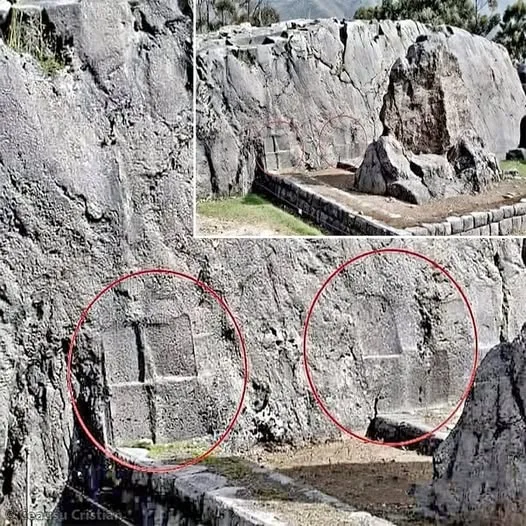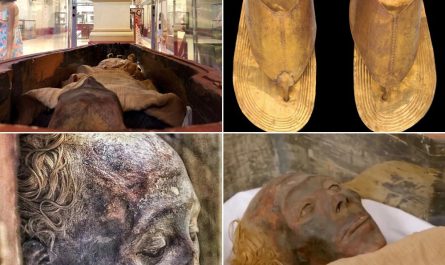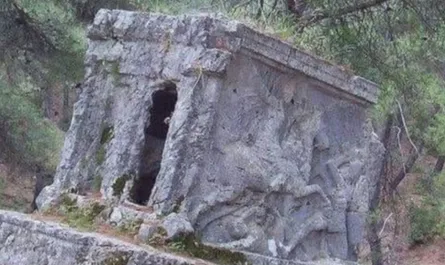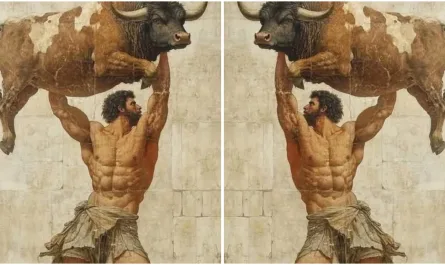Qenqo, Peru: Unraveling the Enigma of Mysterious Carvings
Nestled just 4 kilometers northeast of Cusco in Peru’s Sacred Valley, the ancient site of Qenqo (or Q’enqo) presents a captivating puzzle with its mysterious carvings, particularly the precise rectangular indentations etched into its limestone bedrock. Dating back to the Inca Empire (circa 13th–16th centuries), this ceremonial site, part of the Sacsayhuaman Archaeological Park, is renowned for its intricate rock formations, hidden passages, and ritualistic features. The marked areas in the image highlight these unusual markings, which challenge conventional understanding of ancient stonework and spark debate about the tools and techniques employed by its builders. As of July 2025, Qenqo continues to intrigue historians, archaeologists, and visitors, prompting a reevaluation of what we know about Inca capabilities.

The Site and Its Features
Qenqo, meaning “labyrinth” or “zigzag” in Quechua, is a complex of natural and carved limestone outcrops, transformed by the Incas into a ceremonial center. Key elements include:
- Rock Formations: The site features a large, jagged monolith and terraces carved with steps, niches, and zigzag channels, likely used for ritual offerings like chicha (corn beer) or sacrificial blood.
- Hidden Passages: Labyrinthine tunnels and underground chambers, some with altars, suggest uses for mummification, sacrifices, or astronomical observations, reflecting the Inca’s deep connection to cosmology.
- Rectangular Indentations: The precise, uniform rectangular carvings stand out, appearing too refined for the stone hammers, chisels, and bronze tools typically associated with Inca masonry. These markings, visible in the image, range from shallow grooves to deeper slots, raising questions about their purpose and creation method.
Located at 3,580 meters above sea level, Qenqo’s elevated position offered a strategic and spiritual vantage point, aligning with mountain peaks and solstice events, hinting at its role in celestial rituals.

The Mystery of the Carvings
The rectangular indentations at Qenqo challenge the established narrative of Inca stonework, known for its polygonal, interlocking blocks at sites like Sacsayhuaman. Several aspects fuel the mystery:
- Precision and Uniformity: The carvings’ straight edges and consistent depth suggest a level of accuracy that exceeds what is achievable with traditional tools like andesite hammers or copper chisels. Experiments by archaeologists, such as Jean-Pierre Protzen, demonstrate that Inca masons used trial-and-error shaping and scribing techniques, but these methods typically produced irregular fits rather than precise rectangles.
- Tool Limitations: Inca tools, softer than the limestone they worked, relied on pounding, grinding, and abrasion—often with sand and water—to shape stone. The marked indentations’ smoothness and symmetry prompt speculation about alternative methods, possibly involving harder materials or lost techniques.
- Purpose Unknown: Theories range from practical uses (e.g., tool storage, structural supports) to ceremonial roles (e.g., ritual markers or astronomical calibrations). The lack of associated artifacts leaves the intent unclear, adding to the enigma.
Some alternative perspectives, including posts found on X, suggest these could indicate practice grounds for novice masons or even artificial construction, though these ideas lack concrete evidence and remain speculative.
Questioning Ancient Capabilities
The precision of Qenqo’s carvings invites scrutiny of the Inca’s technological prowess. While mainstream archaeology credits their mastery to sophisticated organization, labor, and empirical knowledge—moving massive stones with ropes and ramps, as seen at Sacsayhuaman—some argue this doesn’t fully explain the indentations. Theories beyond convention include:
- Advanced Tools: Could the Incas have accessed harder materials (e.g., iron or diamond-tipped tools) or chemical agents, like sulfuric acid from pyrite oxidation, to soften stone, as suggested by some studies of Inca masonry? Evidence is scant, and no such tools have been found at Qenqo.
- Pre-Inca Influence: The site’s location near older structures raises the possibility of pre-Inca contributions, though archaeological consensus ties it to the Inca period.
- Extraterrestrial Hypotheses: Fringe theories propose alien assistance, inspired by the site’s complexity, but these lack scientific support and are dismissed by most scholars.
The establishment narrative leans on the Incas’ empirical ingenuity, honed over generations, yet the carvings’ precision pushes the boundaries of this explanation, encouraging open-minded exploration.
Preservation and Modern Interest
As part of the UNESCO-listed Cusco and Sacsayhuaman site, Qenqo is preserved by Peru’s Ministry of Culture, with efforts to stabilize its limestone and limit tourist impact. The site’s tunnels and carvings are accessible via guided tours, with recent findings—like improved mapping of passages—enhancing its study. Visitors in 2025 marvel at its mystique, with posts on X describing it as a “stone riddle” and a “window to Inca secrets,” reflecting ongoing fascination. Challenges include erosion from Andean weather and the need for non-invasive research to protect the site.
Future Prospects
Ongoing research, potentially using 3D laser scanning or geochemical analysis, could reveal tool marks or material traces, shedding light on the carvings’ creation. Collaborative efforts with local Quechua communities may also uncover oral histories offering new insights. Whether the answer lies within known Inca techniques or beyond, Qenqo challenges us to rethink ancient engineering.
Conclusion
The mysterious rectangular indentations at Qenqo, near Cusco, Peru, deepen the site’s allure, questioning the limits of Inca stonework and inviting us to reconsider ancient capabilities. Carved into limestone with hidden passages, this ceremonial site stands as a testament to a civilization’s sophistication, yet its precise markings hint at techniques or tools that defy easy explanation. As we explore these puzzles in July 2025, Qenqo urges us to embrace curiosity, ready to accept answers that might stretch beyond conventional narratives, unlocking the secrets of a past that continues to intrigue.





